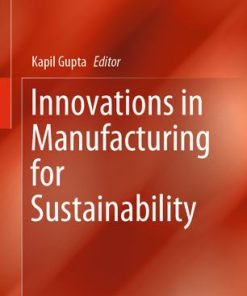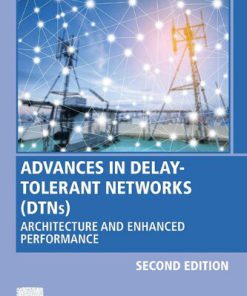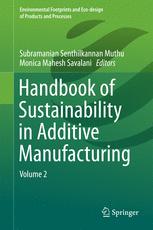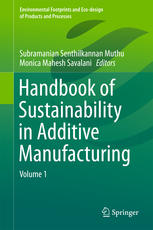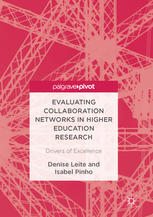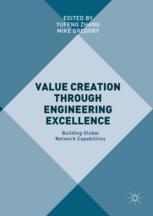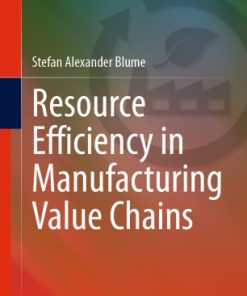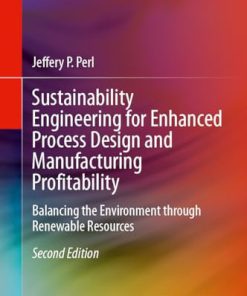Value Networks in Manufacturing Sustainability and Performance Excellence 1st Edition by Jayantha P Liyanage 3319277998 9783319277998
$50.00 Original price was: $50.00.$25.00Current price is: $25.00.
Value Networks in Manufacturing: Sustainability and Performance Excellence 1st Edition by Jayantha P Liyanage – Ebook PDF Instant Download/DeliveryISBN: 3319277998, 9783319277998
Full download Value Networks in Manufacturing: Sustainability and Performance Excellence 1st Edition after payment.
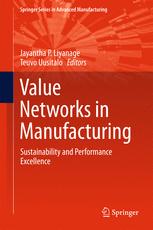
Product details:
ISBN-10 : 3319277998
ISBN-13 : 9783319277998
Author: Jayantha P Liyanage
This book highlights innovative solutions together with various techniques and methods that can help support the manufacturing sector to excel in economic, social, and environmental terms in networked business environments. The book also furthers understanding of sustainable manufacturing from the perspective of value creation in manufacturing networks, by capitalizing on the outcomes of the European ‘Sustainable Value Creation in Manufacturing Networks’ project. New dynamics and uncertainties in modern markets call for innovative solutions in the global manufacturing sector. While the manufacturing sector is traditionally driven by technology, it also requires other managerial and organizational solutions in terms of network governance, business models, sustainable solution development for products and services, performance management portals, etc., which can provide major competitive advantages for companies. At the same time, the manufacturing industry is subject to a change process, where business networks play a major role in value-creating processes. By far the biggest challenge in this context is making value creation a sustainable process where economic, social, and environmental demands are met. Managing product and service-related business operations in manufacturing networks thus brings different challenges that cannot purely be resolved using traditional methods, and techniques. This book is an outcome of a European project funded by the European Commission, and performed by a dedicated R&D consortium comprised of some leading Research institutions and Industrial partners.
Value Networks in Manufacturing: Sustainability and Performance Excellence 1st Edition Table of contents:
1 Living with Complexities and Uncertainties
1 Introduction
2 Force Field
3 Perceptions of the Future
4 New Demands in Perspective
5 From a Complex Picture to Instrumental Elements
6 Question of Life
References
2 Sustainability Concept and Complex Performance Dimensions
1 Introduction
2 Moving with the Flow
3 Clearing the Path and Riding the Wave
4 The Business Case
5 Communicating with Stakeholders
6 Bridging the Gap
References
3 Sustainable Manufacturing: Challenges, Approaches and a Roadmap
Abstract
1 Introduction
2 Relevance of Sustainability from Manufacturing Perspective
3 Sustainable Manufacturing: Definitions, Strategies, Impacts and Approaches
3.1 Definitions and Current Strategies Towards Sustainability
3.2 Current Impacts of Manufacturing Industry from a Sustainability Perspective
3.3 Approaches to Integrate Sustainability in Manufacturing
3.3.1 Sustainability in Manufacturing Companies
3.3.2 Sustainability in Manufacturing Networks
4 Sustainable Manufacturing Roadmap
5 Conclusions
Acknowledgments
References
4 Towards Sustainability Governance in Value Networks
1 Introduction—Need for Network Governance
2 Network Structures in Global Manufacturing Industry
3 Changes in Manufacturing Industry—Towards Value Networks
4 Network Governance Models in Manufacturing Industry
5 Governance Models in Different Network Settings
6 State-of-the-Art Sustainability in Value Networks in the Context of Manufacturing
7 Roles of the Different Actors in Value Network and Business Ecosystem
8 Network Governance Model for Sustainability
9 Conclusions
References
5 Products and Services in a Sustainable World
1 Introduction
2 Concept of Sustainability
3 New Developments in the Manufacturing Branch
4 Product Service Systems as an Enabler for Sustainability
4.1 Advantages of PSS
4.2 Necessity for an Integrated Development Framework
4.3 Process of PSS Development
References
Business Modelling for Sustainable Manufacturing Value Networks
6 Business Models and Business Modelling: State of the Art
1 Introduction
2 Business Models
2.1 Business Model, Business Strategy and Business Architecture
3 Business Model Innovation
4 Business Modelling
4.1 Business Model Canvas
4.2 Business Model Framework
4.3 Collaborative Networked Organisations (CNOs)
4.4 Business Model Design
5 Value
5.1 Sustainable Value
6 Value Network and Stakeholders
7 Conclusions
References
7 Sustainable Business Models: Theoretical Reflections
1 Introduction
2 Sustainable Business Modelling—Frameworks, Concepts and Tools
2.1 Product-Service Systems
2.2 Conceptualising Business Models for Sustainability
2.3 Business Case for Sustainability
2.4 Sustainable Business Model Archetypes
2.4.1 Internalising Externalities Archetypes
2.4.2 Network-Based Archetypes
2.4.3 Society-Based Archetypes
2.4.4 Life Cycle-Based Archetypes
3 Discussion
4 Conclusions
References
8 Practice Review of Business Models for Sustainability
1 Introduction
2 Overview of the Cases
3 Findings from the Cases
4 Conclusions
References
9 Toolset for Sustainable Business Modelling
1 Introduction
2 Use and Test Phase
3 Sustainable Business Modelling Process
4 Toolset
4.1 Primary Tools
4.1.1 Value Mapping Tool
Tool Rationale and Aim
Using the Tool
Applicability of the Tool
4.1.2 Sustainable Business Model Archetypes
Tool Rationale and Aim
Using the Tool
Applicability of the Tool
4.1.3 Business Model Canvas
Using the Tool
Applicability of the Tool
4.1.4 Strategic Roadmapping Tool
4.2 Support Tools
4.2.1 System SWOT analysis
4.2.2 PESTLE and STEEPLED
4.2.3 GRI and SASB guidelines
4.2.4 Corporate sustainability continuum
4.2.5 Scenario Management Tool
Tool Rationale and Aim
Using the Tool
Applicability of the Tool
4.2.6 Sustainability Impact Calculation (SIC) Tool
Tool Rationale and Aim
Using the Tool
Applicability of the Tool
4.2.7 Life Cycle Cost (LCC) Estimation Tool
Tool Rationale and Aim
Using the Tool
Applicability of the Tool
4.2.8 Sustainability Performance Framework
5 Conclusion
References
10 An Industrial Case: Riversimple
1 Overview
2 Riversimple and SustainValue
2.1 Results and Impact
3 Results
3.1 Impact
3.2 Next Steps for Riversimple
Life-Cycle Based Sustainable Solution Development
11 Requirements for Sustainable Solutions Development
1 Introduction
2 How to Develop Requirements for Systems
3 The Life Cycle Phase of Solutions
4 Generic Requirements for Sustainable Solutions
4.1 Requirements Collected from the Literature
4.2 Requirements Derived from Workshops and Practical Experiences
4.3 Conclusion of Generic Requirements for Sustainable Solutions
5 Definition and Characteristics of Relevant Development Methodologies
5.1 Product Development
5.2 Service Development
5.3 Product Service System Engineering
5.4 Product Service System Engineering and Sustainability
6 Requirements for a Development Process for Sustainable Solutions
7 Conclusion
References
12 State of the Art Regarding Existing Approaches
1 Introduction
1.1 Business Strategy Development and Innovation Management
1.1.1 Methods Used in Strategy Development
1.1.2 Methods Used in Innovation Management
1.2 Management of Design, Planning and Development Phase
1.2.1 New Product Development
1.2.2 Systems Engineering
1.2.3 Design for Excellence (DfX) and Design for Sustainability (D4S)
1.3 Management of Manufacturing Systems
1.3.1 Traditional Manufacturing
1.3.2 Lean Manufacturing
1.3.3 Sustainable and Green Manufacturing
1.4 Methodologies Regarding Ethical Sourcing, Trade and Consumerism
1.5 Management of Distribution, Logistics and Services
1.5.1 Green Logistics
1.5.2 Reverse Logistics
1.5.3 Service Operations
1.6 Management of Usage Phase
1.6.1 Quality, Safety, Health and Environmental Management (QSHE)
1.6.2 Maintenance During Usage Phase
1.6.3 Performance Management
1.7 End of Life Cycle Management
1.7.1 Reverse Logistics
1.7.2 From 3R’S to 6R’S
2 Gap Analysis of Existing Development Methodologies Considering Sustainability
3 Conclusion
References
13 Development Methodology for Sustainable Solutions
1 Introduction
2 Conceptualisation of a Development Methodology for Sustainable Solutions
3 General Development Framework
4 Development Methodology for Sustainable Solutions
4.1 Methods—Central Initiation
4.2 Methods—Conceptual Dimensions
4.3 Methods—Operational Dimensions
5 Case Study CLAAS Selbstfahrende Erntemaschinen GmbH
6 Conclusions
References
14 Methods and Tools for Sustainable Development of Products and Services
1 Introduction
2 Identification of Requirements for Tools and Methods Characterizing Their Applicability for Sustai
3 Toolbox for the Development Methodology for Sustainable Solutions
3.1 Tools for the Central Initiation
3.2 Tools for the Conceptual Dimensions
3.3 Tools for the Operational Dimensions
3.4 Tools for the General Use in All Dimensions
4 Conceptualization of a Possible Path to Sustainable Solutions
5 Guideline of a Possible Application of Tools
5.1 Tools for Preparation of Value Network
5.2 Tools Supporting Analysis on Opportunities
5.3 Tools for Idea Generation
5.4 Tools for Design and Conceptualization
5.5 Tools for Implementation, Market, and Use Phases
6 Conclusions
References
Performance Management in Sustainable Manufacturing Networks
15 Dynamic Drivers of Modern Performance: Values, Stakeholders, and Resources
1 Introduction
2 The Value Shift
2.1 What Are Values?
3 Stakes and Stakeholders
3.1 Agents and Conflicting Interests
3.2 Impact on Performance
4 Resource-based Theory
4.1 Theory
4.2 Salient Features
4.3 Intangibles
4.4 Contribution to Results
4.5 Values that Are Instrumental to Deliver
References
16 Perspectives on Performance Assessment and Management
1 Introduction
2 Performance Management in Modern Context
3 Indicators, Measures, and Measurement Systems
4 Inherent Complexities and Ambiguities
5 Paving the Future Path
References
17 Integrated Performance Framework for Sustainable Manufacturing Networks
1 Introduction
2 Move Toward Manufacturing Networks
3 Conception of the Framework Design
3.1 Structuring Causes and Effects
3.2 Weaknesses of the Firm-Centric Perspective for Sustainability Assessment
3.3 Including Network Impact
3.4 Internal Performance Levers of Sustainability
3.5 Sustainability Performance Outcome
4 Application of the Performance Framework
5 Conclusion
References
18 Maturity Assessment for Systematic Performance Improvement in Manufacturing Networks
1 Introduction
2 From Maturity Models to Maturity Assessment
3 Process Areas to Address Network Conditions and Structural Elements
3.1 Network Conditions
3.2 Structural Elements
4 An Example of Use of the Proposed Approach
5 The Role of Change Management for the Exploitation of Maturity Assessment
6 Conclusions
People also search for Value Networks in Manufacturing: Sustainability and Performance Excellence 1st Edition:
what is value network
value network marketing
value network mapping
value network definition
a value-added network (van) adds value by
Tags: Value Networks, Manufacturing, Sustainability, Performance Excellence, Jayantha Liyanage
You may also like…
Business & Economics
Global Value Chains Flexibility and Sustainability Julia Connell
Computers - Networking
Engineering
Education Studies & Teaching
Business & Economics
Engineering - Environmental





